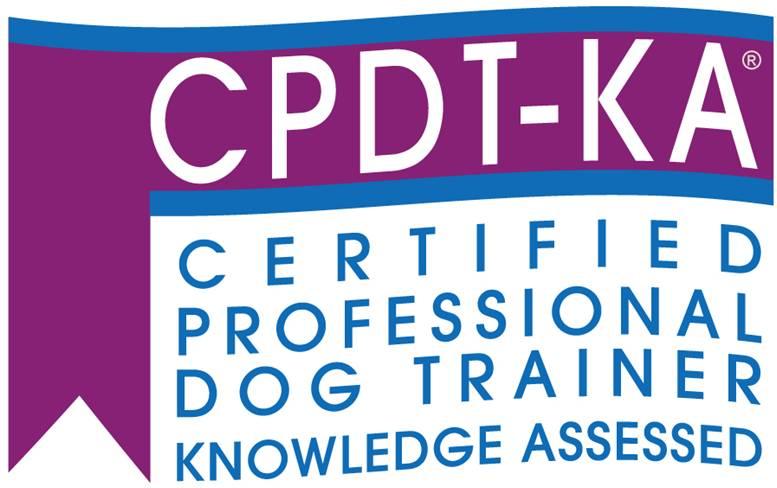In the ever-evolving landscape of dog training and certification, the Certification Council for Professional Dog Trainers (CCPDT) stands out as a beacon of excellence and integrity. Founded with the mission to advance the quality of dog training and promote humane and effective training methods, the CCPDT has established itself as a pivotal organization, setting standards that reflect best practices in the canine training industry. With a focus on elevating the profession through rigorous credentialing and continuing education, the CCPDT not only empowers trainers but also fosters a deeper understanding of the art and science of training dogs. In this article, we will explore the role of the CCPDT, the significance of its certifications, and the impact it has on both trainers and the dogs they guide. Join us as we delve into the world of dog training excellence and discover how the CCPDT is shaping the future of the profession.
Table of Contents
- Understanding the CCPDT Certification Landscape
- Examining the Benefits of CCPDT Certification for Dog Trainers
- Navigating the Path to CCPDT Certification Success
- Best Practices for Maintaining Your CCPDT Credential
- Q&A
- Key Takeaways
Understanding the CCPDT Certification Landscape
The Certification Council for Professional Dog Trainers (CCPDT) plays a pivotal role in establishing and maintaining professional standards within the dog training industry. By offering a framework for certification, the CCPDT empowers trainers to demonstrate their knowledge, skills, and ethical commitment to effective dog training practices. This certification not only reinforces the credibility of trainers but also assures clients that they are working with qualified professionals who adhere to industry best practices. Moreover, it is essential for trainers to recognize the varied paths to achieving certification, which typically include practices like attending workshops, gaining hands-on experience, and studying relevant literature.
Potential certification candidates should be aware that the CCPDT offers different levels of certification, tailored for various expertise and experience. Among the most notable are:
- CPDT-KA: Certification for dog trainers who demonstrate knowledge and experience in humane training methods.
- CPDT-KSA: An advanced certification that includes a knowledge and skills assessment.
- CBCC-KA: Targeted towards those specializing in canine behavior consulting.
Understanding these certification levels can guide trainers in their career development while providing clients with clarity on what to expect from different professional certifications. The rigorous nature of the CCPDT certification process highlights the Council’s commitment to quality and ethical training practices, thus enhancing the overall professionalism within the dog training community.
Examining the Benefits of CCPDT Certification for Dog Trainers
Obtaining a CCPDT certification can significantly elevate a dog trainer’s professional profile. This specialized certification not only validates expertise in positive reinforcement techniques but also demonstrates a commitment to ethical training practices. By holding a recognized credential, trainers can enhance their credibility, gaining the trust of clients who are increasingly aware of the importance of humane and science-based training methods. This boosted reputation can lead to an increase in client inquiries and ultimately, a more successful training business.
Furthermore, the benefits of CCPDT certification extend beyond personal advancement. Trainers who are certified often have access to exclusive resources, networking opportunities, and ongoing educational content that facilitate continuous professional development. Joining a community of like-minded professionals fosters collaboration and a rich exchange of ideas that can spark innovation in training methodologies. Consider some of the key advantages:
- Credibility: A recognized certification signals professionalism to potential clients.
- Networking: Connect with fellow trainers and industry leaders for support and knowledge exchange.
- Continuous Learning: Stay updated on the latest research and techniques in dog training.
- Client Trust: Clients feel more secure hiring a certified trainer, knowing they follow rigorous standards.
Navigating the Path to CCPDT Certification Success
Embarking on the journey towards CCPDT certification requires more than just knowledge; it demands a strategy and commitment to continuous improvement. To begin, familiarize yourself with the exam content outline, ensuring you understand the key areas that will be assessed. Regularly engaging with relevant materials such as books, online courses, and webinars can significantly enhance your understanding. Additionally, consider joining a study group or finding a mentor who can provide insights and support. Here are some strategies to keep in mind:
- Create a study schedule to focus your efforts and track progress.
- Utilize practice exams to hone your skills and build confidence.
- Join online forums for advice and camaraderie with fellow candidates.
- Attend local workshops for hands-on experience and networking opportunities.
As you prepare, it’s essential to focus on applying your knowledge in practical settings. This not only solidifies your learning but also prepares you for real-world scenarios you may encounter in professional environments. Implementing techniques learned during your studies in practice sessions will reinforce your skills, making them second nature. Additionally, consider maintaining a log of your training sessions, which can help you reflect on your progress. Below is a simple table to guide your practical application:
| Practice Skill | Date Practiced | Reflection Notes |
|---|---|---|
| leash handling | MM/DD/YYYY | Overall improvement noted. |
| basic commands | MM/DD/YYYY | Needs more repetition. |
| behavior assessment | MM/DD/YYYY | Confident in performing assessments. |
Best Practices for Maintaining Your CCPDT Credential
To effectively maintain your CCPDT credential, it’s essential to engage in continuous learning and professional development. Organizations like the CCPDT often require a specific number of continuing education units (CEUs) over a defined period. Consider diversifying your education by attending workshops, webinars, or conferences focused on dog training and behavior. Additionally, participating in membership programs or online courses can enhance your skill set while keeping your knowledge current. Regularly review the requirements outlined by the CCPDT to ensure compliance and avoid any lapse in your credentials.
Networking with fellow professionals in the field also plays a pivotal role in sustaining your CCPDT credential. Building meaningful relationships can provide access to valuable insights and resources. To facilitate this, consider:
- Joining local training groups or associations to connect with like-minded individuals.
- Participating in online forums where you can discuss challenges and share solutions.
- Collaborating with others on community projects or educational initiatives.
Implementing these practices not only contributes to your professional growth but also strengthens the community of certified trainers, ensuring high standards across the industry.
Q&A
Q&A: Understanding CCPDT – Certification Council for Professional Dog Trainers
Q1: What is CCPDT?
A: The Certification Council for Professional Dog Trainers (CCPDT) is an organization that provides certification for dog trainers and behavior professionals. Its mission is to promote high standards in the dog training profession and to help ensure that trainers have the necessary skills and knowledge to work effectively with dogs and their owners.
Q2: Why is certification from CCPDT important?
A: Certification from CCPDT signifies that a trainer has met rigorous standards and has demonstrated their expertise in canine behavior, training techniques, and ethics. This credential helps dog owners make informed decisions when selecting a trainer, while also supporting professional development within the industry.
Q3: How does one become certified by CCPDT?
A: To achieve certification, applicants must meet specific eligibility requirements, which typically include a certain number of hours of professional experience, completion of recommended educational courses, and passing a comprehensive exam. Certification is also renewed periodically, ensuring that trainers stay current with the latest techniques and knowledge.
Q4: What types of certifications does CCPDT offer?
A: CCPDT offers several types of certification, including the Certified Professional Dog Trainer (CPDT-KA) for general trainers, the Certified Professional Dog Trainer – Knowledge Assessed (CPDT-KSA) emphasizing both knowledge and skills, and the Certified Behavior Consultant Canine (CBCC-KA) for professionals focusing on canine behavior consulting.
Q5: What are the benefits of working with a CCPDT-certified trainer?
A: Working with a CCPDT-certified trainer means you’re engaging with someone who has verified knowledge and expertise in dog training. These trainers adhere to a code of ethics, are committed to ongoing education, and employ scientifically-based methods, ensuring a positive experience for both the dog and the owner.
Q6: How can dog owners verify if a trainer is certified by CCPDT?
A: Dog owners can easily verify a trainer’s certification status by visiting the CCPDT website, where they can search for certified trainers by name or location. This resource provides peace of mind that the trainer they are considering has met the established standards of the profession.
Q7: How does CCPDT contribute to the ongoing education of dog trainers?
A: CCPDT not only certifies trainers but also offers resources for continued education, including workshops, seminars, and webinars. These opportunities allow trainers to stay up-to-date with new research, training methodologies, and best practices in the field of canine training and behavior.
Q8: Is there a community for certified trainers?
A: Yes, CCPDT fosters a community of certified trainers through networking opportunities, online forums, and events. This sense of community helps professionals share knowledge, best practices, and support, creating a collaborative environment for continuing education and growth.
Whether you are a dog owner looking for training assistance or a trainer seeking certification, understanding the role of CCPDT in the canine training landscape is essential. By prioritizing certification, we elevate the standards of dog training, benefitting our furry companions and their human counterparts alike.
Key Takeaways
As we draw the curtain on our exploration of the Certification Council for Professional Dog Trainers (CCPDT), it is clear that this organization stands as a cornerstone in the field of canine education and professional standards. The CCPDT not only champions the idea of knowledge and skill in dog training, but also fosters a community committed to ethical practices and ongoing professional development.
In a world where the bond between humans and dogs is ever so vital, the work of the CCPDT is critical—it ensures trainers not only possess the necessary qualifications but also adhere to best practices that enhance the lives of dogs and their owners alike. Whether you are a seasoned trainer, a novice in the field, or a dog parent seeking guidance, the resources and support provided by the CCPDT offer a pathway to success and understanding.
As you navigate your journey in dog training, remember that behind every certified trainer lies a wealth of knowledge and a dedication to the art of communicating with our four-legged companions. Let this insight inspire you to engage with the CCPDT, pursuing excellence in training and the well-being of your canine friends. The future of dog training is bright, and with organizations like the CCPDT leading the way, we can all look forward to a time when every dog receives the quality training they deserve.

